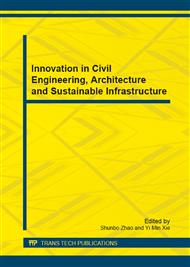p.101
p.105
p.109
p.118
p.121
p.129
p.133
p.138
p.142
An Improved Method to Calculate the Direction and Weight in Microplane Constitutive Model
Abstract:
This paper analyzes the calculation method on microplane direction and weight in current literature based on introducing numerical discretization algorithm in the microplane model. The characteristics and disadvantages of current methods are given out. In response to the issue that the orientation of microplane is not enough uniform and the shape and physical meaning of microplane is not clear, it is given out a kind of method that carrying out projection on the spherical surface after dividing the surface grid of regular polyhedron to calculate the orientation of microplane, then using the knowledge of spherical geometry to calculate the weight of microplane. Comparing and selecting the dividing scheme of microplane that obtained by different regular polyhedron and the grid levels, the optimization objective of fitting macroscopic elastic stiffness matrix is given out. The calculation results indicate that the method provided in this paper can obtain the dividing scheme that the shape and size of microplane are fully uniform, and the calculation result is more accurate than the optimal solution in the literature.
Info:
Periodical:
Pages:
121-128
Citation:
Online since:
November 2012
Authors:
Price:
Сopyright:
© 2012 Trans Tech Publications Ltd. All Rights Reserved
Share:
Citation:


